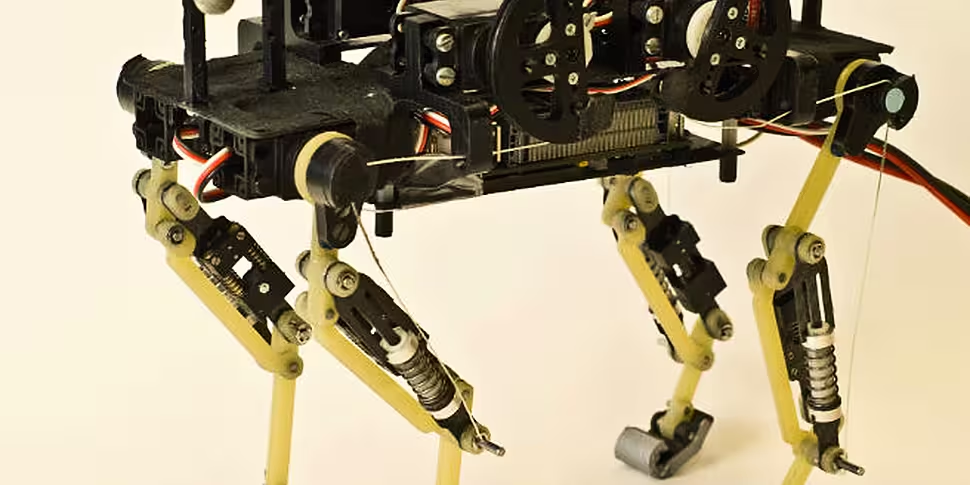Developed by the Biorobotics Laboratory at Ecole Polytechnique Fédérale de Lausanne in Switzerland, the mechanical creation can move at the same speed as an average walking human.
The prototype currently has no in-built guidance system and is reliant on a long tail of wires to provide electricity. However, the small robot has been designed with the possibility of attaching small cameras like GoPros.
The designers found inspiration in the movements of cats both big and small in an effort to create a robot that moves in a more natural and stable way on rough terrain. Although still being prototyped, the team explain “the long-term goal of the cheetah-cub robot is to be able to develop fast, agile, ground-hugging machines for use in exploration, for example in search and rescue in natural disaster situations.”
The cat-like movement is controlled through a Central Pattern Generator that determines the movements of the robot's legs.
Researchers from the same laboratory, who are focused on analysing the animal kingdom for ways to improve robotic technology, have previously developed the Salamandra Robotica II - a large robot based on a salamander that can move on both land and water.
A larger ‘cheetah bot’, built by DARPA, is the fastest legged robot in history, having achieved a record speed of 28.3 miles per hour:
(Image: Biorobotics Laboratory, EPFL)









